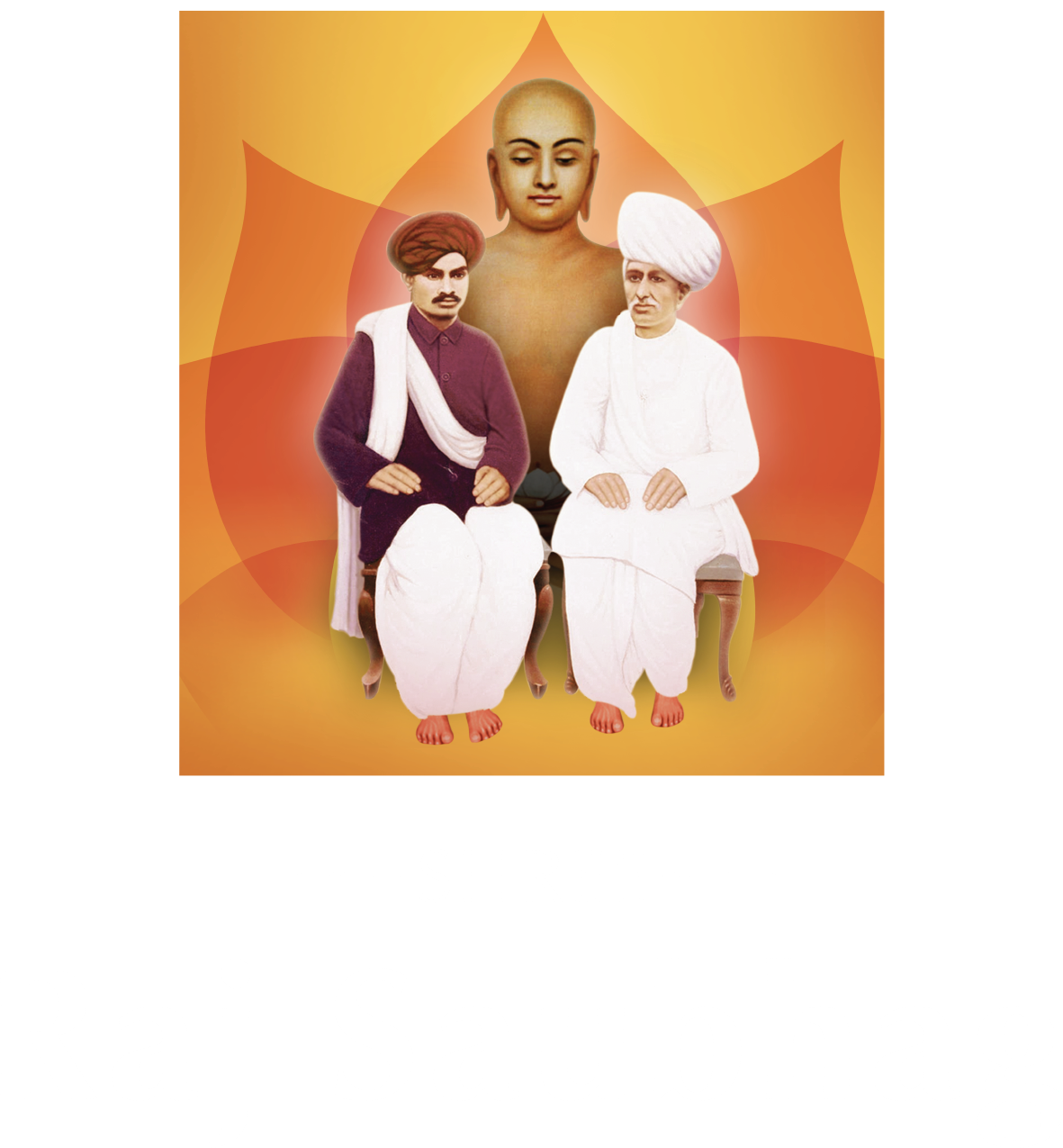Shree Bhaktamar Stotra Mahapujan
28th October 2016
The ashram was resplendent as ever, its magical aura enhanced by the tasteful decoration of lights and diyas all round for Diwali. On Dhanteras, a Mahapoojan (ceremonial veneration) of the holy Shree Bhaktamar Stotra was held at the new swadhyay hall. Two mumukshus, Rupaben and Himanshubhai Jain, sponsored it in the memory of Himanshubhai’s father, Late Shri Madhukantbhai Jain.
The arrangements were meticulous – each family had a dedicated ornate stool and a Bhaktamar Yantra to themselves, along with a bowl of vaskep (powder made of sandalwood, saffron and camphor). At the end of the recital of each gatha (verse of four lines) of Shree Bhaktamar Stotra, one was to sprinkle vaskep on a square on the Yantra as a symbol of offering and devotion. Three types of pujan – coconut, fruit and lamp - were offered by three persons for each gatha.
Thanks to the splendid arrangements, each one of us could participate fully in this empowering ceremony. The vidhikaar Panditji Hiteshbha, who had arrived from Baroda especially for the Mahapujan, conducted it with a great deal of precision. He explained the meaning and significance of every word before reciting the gatha, and enjoined us to say “Swaha” aloud each time as ‘swaha’ implies an earnest offering from our heart.
After every four verses (gathas), Brahmanisht Vikrambhai and Yashika would render a stirng bhakti song in the praise of our rthankars. We were asked to chant “Om Hrim Shree Adinathay Namah” in our minds throughout.
Shree Bhaktamara Stotra is composed by Acharya Mantung Maharaj Saheb. It is said that when he was shackled by the king, he composed the Stotra, and as he recited every verse of the Stotra, each chain broke open. When an unconvinced king tested the power of the Stotra by imprisoning another devotee of the Stotra, Hemraj Sheth, the power of the Stotra was proved by Sheth in the same manner.
Bhaktamar literally means that which makes the disciple immortal. These verses describe the fine qualities of Jineshwar Bhagwan. When recited with commitment, sincerity and devotion, this magnificent composition has the latent power to lighten our karmic load and connect us with the Jineshwar Bhagwan or the divinity within.
Verses 1 to 9 depict the poet’s humility in his endeavour to describe the grandeur of Jineshwar Bhagwan – a task that can be accomplished not through the use of one’s intelligence or ability but by sheer devotion.
Verses 10 to 33 sing the glory of Jineshwar Bhagwan, whose one darshan changes you so much that you cannot ever be satisfied with anything worldly again. No sansaric thought or flaw ever remotely comes near Him, centred as He remains in His state of bliss. Anyone who worships this transcendental state of being with all his heart is released from the ills of worldly life and achieves identical equanimity.
Verses 34 to 44 relate to the spiritual and worldly benefits of Paramatma bhakti. Reciting Verse 41, for instance, has the potential to cure an ailing person, or give him peace. The Panditiji mentioned that using the water used for abhishek of the Bhaktamar Yantra along with the recital of this verse can work wonders for the ill. Verse 43 and 44 tell us how, like beads on a necklace, each verse in the glory of Jineshwar Bhagwan is entwined around His divine attributes.
The dogmatic richness of Shree Bhaktamar Stotra is sufficient to transport you to the world ofthe holy; when coupled with a flawless rendition of each gatha, with attentive participation of each and every mumukshu under the guidance and ever-flowing grace of P.P. Bhaishree, it acquired a life all its own. The gathas reverberated in the atmosphere, touched each one of us vibrantly and left each one of us aglow with an inner radiance we did not know we had.
We felt cleansed and ready to soak in the spiritual fest that awaited us.





















